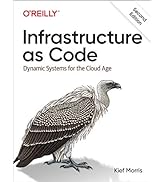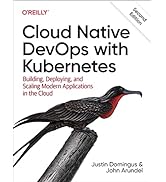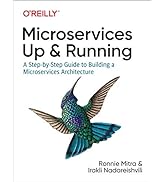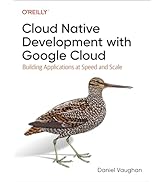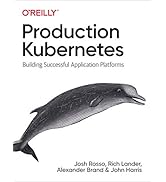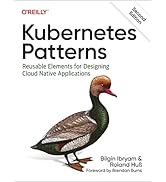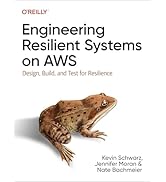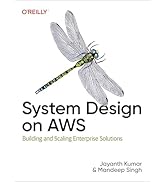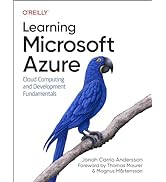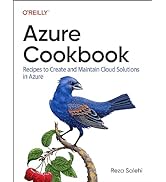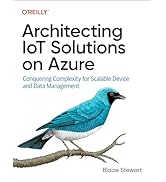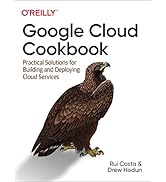
Amazon Prime Free Trial
FREE Delivery is available to Prime members. To join, select "Try Amazon Prime and start saving today with FREE Delivery" below the Add to Cart button and confirm your Prime free trial.
Amazon Prime members enjoy:- Cardmembers earn 5% Back at Amazon.com with a Prime Credit Card.
- Unlimited FREE Prime delivery
- Streaming of thousands of movies and TV shows with limited ads on Prime Video.
- A Kindle book to borrow for free each month - with no due dates
- Listen to over 2 million songs and hundreds of playlists
Important: Your credit card will NOT be charged when you start your free trial or if you cancel during the trial period. If you're happy with Amazon Prime, do nothing. At the end of the free trial, your membership will automatically upgrade to a monthly membership.
Buy new:
-10% $59.19$59.19
Ships from: Amazon.com Sold by: Amazon.com
Save with Used - Good
$34.79$34.79

Download the free Kindle app and start reading Kindle books instantly on your smartphone, tablet, or computer - no Kindle device required.
Read instantly on your browser with Kindle for Web.
Using your mobile phone camera - scan the code below and download the Kindle app.

Practical Process Automation: Orchestration and Integration in Microservices and Cloud Native Architectures 1st Edition
Purchase options and add-ons
In today's IT architectures, microservices and serverless functions play increasingly important roles in process automation. But how do you create meaningful, comprehensive, and connected business solutions when the individual components are decoupled and independent by design? Targeted at developers and architects, this book presents a framework through examples, practical advice, and use cases to help you design and automate complex processes.
As systems are more distributed, asynchronous, and reactive, process automation requires state handling to deal with long-running interactions. Author Bernd Ruecker demonstrates how to leverage process automation technology like workflow engines to orchestrate software, humans, decisions, or bots.
- Learn how modern process automation compares to business process management, service-oriented architecture, batch processing, event streaming, and data pipeline solutions
- Understand how to use workflow engines and executable process models with BPMN
- Understand the difference between orchestration and choreography and how to balance both
- ISBN-10149206145X
- ISBN-13978-1492061458
- Edition1st
- PublisherO'Reilly Media
- Publication dateApril 20, 2021
- LanguageEnglish
- Dimensions7 x 0.62 x 9.19 inches
- Print length292 pages
Frequently bought together

Customers who viewed this item also viewed
From the brand

-
Explore Cloud & Microservices
-
Kubernetes
-
AWS
-
Azure
-
Google
-

Sharing the knowledge of experts
O'Reilly's mission is to change the world by sharing the knowledge of innovators. For over 40 years, we've inspired companies and individuals to do new things (and do them better) by providing the skills and understanding that are necessary for success.
Our customers are hungry to build the innovations that propel the world forward. And we help them do just that.
From the Publisher

About This Book
Process Automation Tools and Techniques
There are many ways to automate processes, from plain software development to batch processing, event-driven microservices, and any other development practice you can think of.
But automating processes has specific characteristics & requirements, and there is dedicated software built for addressing these. Analysts define different software market categories that are related to process automation: for example, digital process automation (DPA), intelligent business process management suites (iBPMSs), low-code platforms, robotic process automation (RPA), microservice orchestration, process orchestration, process monitoring, process mining, decision support, & automation.
All the different software categories provide tools & technologies that allow organizations to coordinate, automate, and improve business processes. These processes can include people, software, decisions, bots, and things.
That’s a broad scope. So what will we focus on in this book?
The Scope of This Book
This book looks at how process automation can be applied in modern system architectures and software development practices. It examines how tool support needs to look like to become a vital part of every developer’s toolbox. It demonstrates that the core component to make this happen is a lightweight and developer-friendly workflow engine, which will be explored in great detail throughout the book.
Along the way, we’ll discuss some typical misconceptions. Workflow engines are not alien in software development, like some people may expect. And even if neither analyst reports nor tools from big vendors are particularly developer-focused or developer-friendly, there are alternative tools available today, as you will see throughout this book. Some of these might not fit into the categories mentioned earlier, but others do.
That said, I will not dedicate a lot of time to what analysts say about process automation software, but focus on giving practical advice about workflow engines in the context of software development in modern architectures. In this context, I will weave together ideas from microservices, event-driven systems, and domain-driven design.
This might give you a new perspective on process automation.
Who This Book Is For
This book targets software developers and software or system architects who want to learn about process automation.
If you are a software developer, you might want to use a workflow engine in your application, service, or microservice to solve hands-on problems. This book will help you understand which problems a workflow engine can solve for you, and how to get started.
If you are a system architect, this book will help you understand opportunities and pitfalls around process automation. It will guide you through some tough architectural decisions and trade-offs, including how using a workflow engine compares to alternative approaches or whether a workflow engine should be operated centrally.
But you can also benefit if you work in other roles. For example:
- If you are an IT manager, this book can help you make better-informed decisions and ask the right questions internally.
- If you are a business analyst, this book can help you if you are motivated to think outside the box and understand the technical side of things.
Overall, you will need some general experience in the field of software engineering, but no other specific knowledge.
Editorial Reviews
About the Author
Product details
- Publisher : O'Reilly Media; 1st edition (April 20, 2021)
- Language : English
- Paperback : 292 pages
- ISBN-10 : 149206145X
- ISBN-13 : 978-1492061458
- Item Weight : 2.31 pounds
- Dimensions : 7 x 0.62 x 9.19 inches
- Best Sellers Rank: #1,079,871 in Books (See Top 100 in Books)
- #260 in Software Design Tools
- #453 in Computer Systems Analysis & Design (Books)
- #940 in Cloud Computing (Books)
- Customer Reviews:
About the author

I have been the in the software development field for more than 15 years, automating highly scalable workflows at global companies including T-Mobile, Lufthansa and Zalando and contributing to various open source workflow engines.
I’m Co-Founder and Chief Technologist of Camunda – an open source software company reinventing workflow automation.
Along with my Co-Founder, I wrote "Real-Life BPMN," a popular book about workflow modeling and automation. I regularly speak at international conferences and write for various magazines, focusing on new workflow automation paradigms that fit into modern architectures around distributed systems, microservices, domain-driven design, event-driven architecture and reactive systems.
Customer reviews
- 5 star4 star3 star2 star1 star5 star77%13%11%0%0%77%
- 5 star4 star3 star2 star1 star4 star77%13%11%0%0%13%
- 5 star4 star3 star2 star1 star3 star77%13%11%0%0%11%
- 5 star4 star3 star2 star1 star2 star77%13%11%0%0%0%
- 5 star4 star3 star2 star1 star1 star77%13%11%0%0%0%
Customer Reviews, including Product Star Ratings help customers to learn more about the product and decide whether it is the right product for them.
To calculate the overall star rating and percentage breakdown by star, we don’t use a simple average. Instead, our system considers things like how recent a review is and if the reviewer bought the item on Amazon. It also analyzed reviews to verify trustworthiness.
Learn more how customers reviews work on AmazonTop reviews from the United States
There was a problem filtering reviews right now. Please try again later.
- Reviewed in the United States on October 19, 2021Bernd knows process automation like he knows his own name, which makes him uniquely able to distill complex (to me, at least) principles down to, indeed, practical components. I’m very glad I bought this book.
- Reviewed in the United States on October 10, 2021Low code options aren't practical for most real world use cases. This book it!
- Reviewed in the United States on February 2, 2022The book gives a great overview on why process automation isn't something done by people in white lab coats but is an integral part of modern software architecture. I particularly enjoyed that the author (who is the co-foiunder of a popular open source BPMN tool) keeps a very balanced view, highlighting trade-offs. This makes the book worth a read for every software engineer,
- Reviewed in the United States on November 18, 2021The author does an excellent job describing the challenges we experience when attempting to track/manage long running processes, especially when working with microservices.
I'm a veteran architect, and worked with and engineered many low code solutions which always have short comings.
The "wild west" architecture is all too common in the real-world, and this book accurately identifies the root of the problems and presents efficient and thought provoking solutions.
There are plenty of practical generalizations that are helpful for any application of automation - and since I finished the book a few days ago, I've already encountered multiple opportunities for implementing the solutions described in the book.
Top reviews from other countries
 Saket MishraReviewed in India on January 21, 2022
Saket MishraReviewed in India on January 21, 20225.0 out of 5 stars Easy explanation
Must read book for software architects.
 RapacesReviewed in France on January 13, 2022
RapacesReviewed in France on January 13, 20223.0 out of 5 stars First 150 pages
The first half of the book was mostly relevant and insightful. Maybe because I am not a developer.
 Thomas MoermanReviewed in the Netherlands on November 13, 2021
Thomas MoermanReviewed in the Netherlands on November 13, 20215.0 out of 5 stars Mandatory reading for microservice architects
Must-read if you are involved in microservices. The book offers very useful guidance in making sense of the different forces that apply in a microservices context, using process automation as the backbone perspective. Highly recommended, read cover-to-cover.
 SivaramakrishnanReviewed in India on June 3, 2021
SivaramakrishnanReviewed in India on June 3, 20215.0 out of 5 stars Enriching experience
Author seems to be giving majority perspective from camunda BPM world , it was good to go through the book











